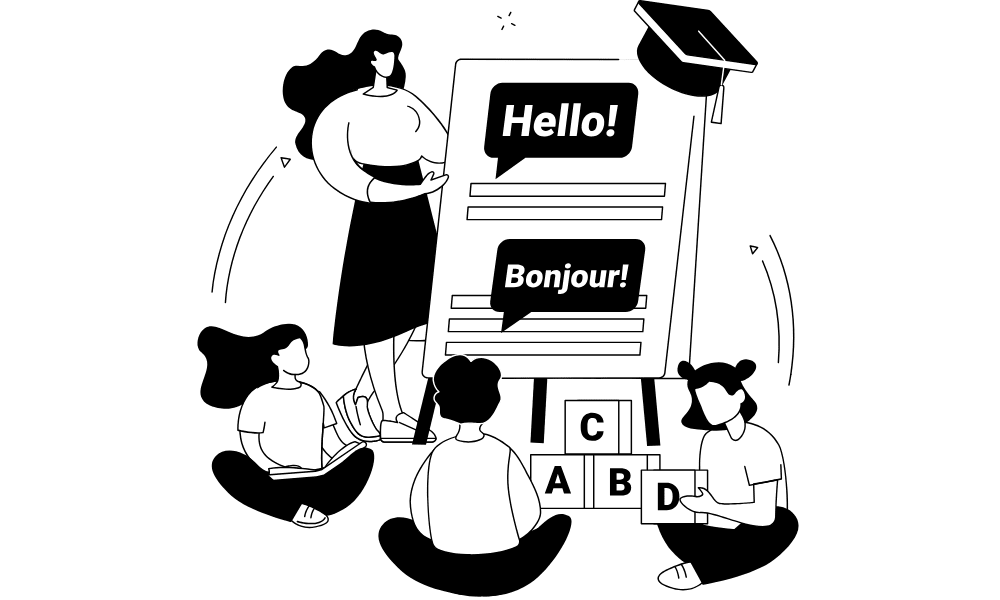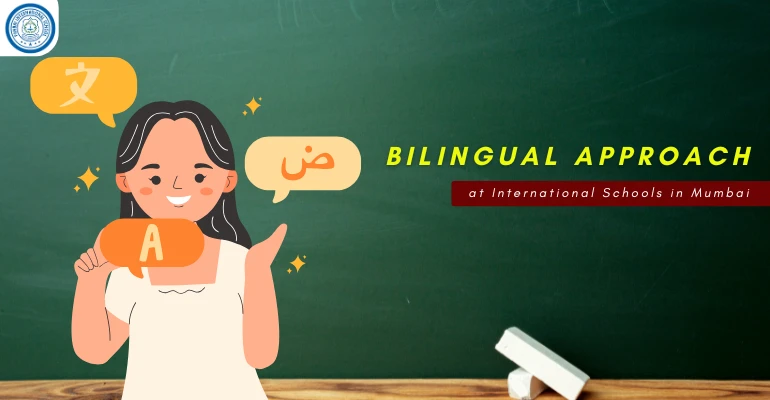The Bilingual Approach at International Schools in Mumbai
February 17, 2025 2025-02-17 10:35The Bilingual Approach at International Schools in Mumbai
In today’s globalized world, mastering more than one language is no longer a luxury—it’s a necessity. The bilingual approach in education has gained immense popularity, especially in international schools, where students are prepared for a multicultural and multilingual future.
With Mumbai being home to some of the finest institutions, the Best International Schools in Mumbai have integrated bilingual education to give students an academic edge while preserving cultural identity.
But what makes this approach so effective? Let’s explore its impact on cognitive development, academic performance, and future career opportunities.
Understanding the Bilingual Approach in Education


The bilingual approach involves teaching students in two languages, often blending their native language with an internationally recognized one, such as English.
This method enhances language proficiency while ensuring students can grasp complex concepts without language barriers. It fosters a deep understanding of both languages, making students more adaptable to different cultural and professional environments.
Unlike traditional language learning, where students memorize vocabulary and grammar, the bilingual approach ensures that both languages are actively used in instruction, discussion, and problem-solving, leading to better retention and fluency.
Benefits of the Bilingual Approach in International Schools


1. Cognitive Development and Enhanced Brain Function
Bilingual students display superior cognitive skills, including improved problem-solving, memory retention, and multitasking abilities.
Studies show that switching between languages strengthens the brain’s executive function, making students more adaptable and capable of handling complex tasks.
2. Academic Excellence Across Subjects
Contrary to the misconception that learning two languages may slow academic progress, research indicates that bilingual students often outperform their monolingual peers in reading, comprehension, and even mathematics. The ability to think in two languages enhances critical thinking and analytical skills.
3. Greater Cultural Awareness and Adaptability
Mumbai, a melting pot of cultures, provides the perfect setting for bilingual education. Learning in multiple languages fosters an appreciation for different cultures, improving students’ ability to connect with diverse communities. This global outlook is essential for students aspiring to study or work abroad.
4. Career Advantages in a Competitive World
As businesses expand internationally, multilingual professionals are in high demand. A bilingual approach in school equips students with the linguistic skills necessary to succeed in global industries such as diplomacy, finance, healthcare, and technology.
5. Stronger Social and Communication Skills
Being bilingual allows students to communicate confidently in different settings. It improves their ability to express ideas clearly and understand multiple perspectives, making them more effective collaborators and leaders.
How International Schools in Mumbai Implement the Bilingual Approach
International schools in Mumbai have developed structured bilingual education programs to ensure students receive the best language training without compromising academic rigor.
These schools follow various methods, including:
- Dual Language Immersion: Subjects are taught in two languages, helping students develop fluency in both.
- Transitional Bilingual Education: Students start with their native language and gradually transition to the secondary language for academic content.
- Two-Way Immersion Programs: Classrooms include both native speakers of each language, allowing students to learn from each other naturally.
By incorporating these methods, the Best International Schools in Mumbai create an inclusive learning environment where students gain language proficiency while excelling in other academic areas.
Challenges and Solutions in Bilingual Education


While the bilingual approach offers numerous benefits, schools and students may face challenges, including:
1. Maintaining Equal Proficiency in Both Languages
Some students may become dominant in one language. To address this, schools balance instruction time and encourage activities in both languages.
2. Training Qualified Bilingual Educators
Teachers must be fluent in both languages and skilled in bilingual teaching techniques. Many international schools invest in specialized training programs for their staff.
3. Ensuring Seamless Transition to Higher Education
Some parents worry about whether bilingual education aligns with university entrance requirements. However, universities worldwide increasingly value multilingual students for their enhanced cognitive and analytical skills.
How Parents Can Support the Bilingual Approach at Home


Parents play a crucial role in reinforcing bilingual learning outside the classroom.
Here’s how they can help:
- Encourage conversations in both languages at home.
- Provide bilingual books and media to make language learning engaging.
- Practice translation exercises to help children think in both languages.
- Foster cultural connections by celebrating festivals and traditions associated with both languages.
By actively participating in their child’s bilingual education, parents can strengthen language skills and build confidence in communication.




